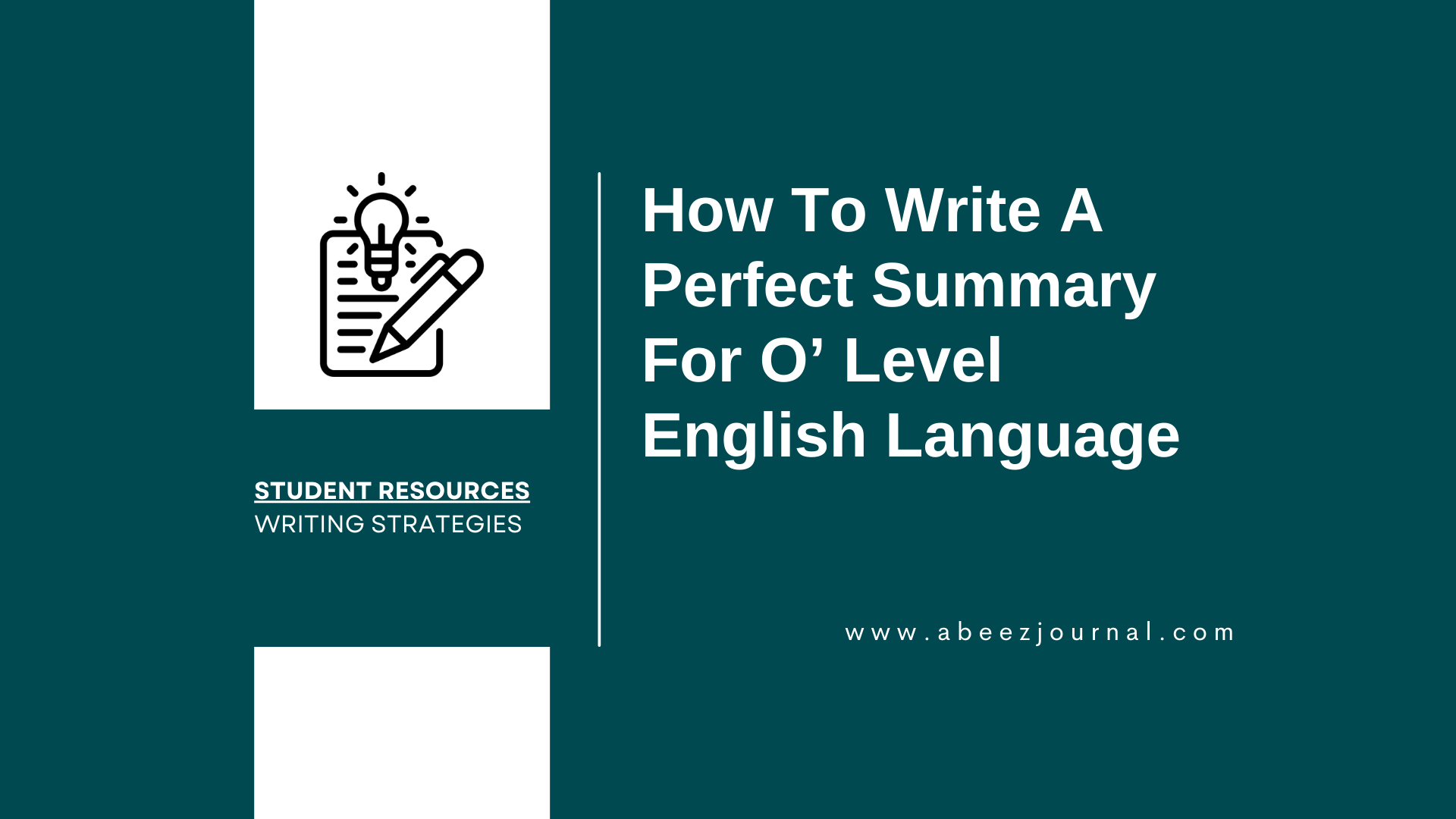
Would you like to ace your O Level English language paper? Do you want to crack the code to write the perfect summary for your O Level English language paper?
In this post, you will learn to write a summary for your O Level English language paper without feeling distressed!
The Summary Writing Question for O Level English
Section 1: Reading for Ideas
Before we begin, let us review the summary writing question. In Paper 2, the Reading Paper, you are required to write a summary of a nonfiction text in 150 – 180 words.
This question has two parts: Question 1(a) Notes and Question 1 (b) Summary.
In Question 1 (a) you are supposed to select and write down the relevant main ideas in bullet form which do not need to be in your own words.
Whereas in Question 1(b), you are expected to write a coherent summary in your own words using your ‘already-selected and listed’ content points.
Write The Perfect Summary For O Level English In Six Easy Steps
Just follow these six easy steps and ace your O Level summary writing question.
Step 01:
Read the question first and underline the question requirements.
Step 02:
Next, read the passage carefully and underline or highlight the relevant points as you read, and if you prefer, you can use brackets or number them.
While you underline or highlight each of the main relevant points, try writing synonyms to help you with rephrasing for Question 1 (b), and repeat this process as you read through the rest of the section.
Now you may ask, “How do I make sure that the points I am selecting are correct and are relevant?
The answer is, “Simply avoid D.I.E.R.Q:
Details: If not asked in the question, avoid writing the details that support the main point.
Irrelevant Points: Ideas and points that are not required in the question must not be included. Refer to the question to ensure that you are selecting the required content points.
Examples: Unless required in the summary question, avoid writing examples or elaborations that support the main points.
Repetitions: Do not repeat any points even if they have been repeated in the original text. A good idea is to combine similar/ ideas and mention them only once.
Quotations: Do not include any quotations when selecting the content points as they usually support the main idea.
Step 03:
In your O Level English reading paper, you should write the summary for two parts of the text which will be mentioned in the question.
To do so, make sure you use the given space to write your content points. For Question 1 (a) Notes, you are not required to write the content points in your own words as yet. Then, select 12 distinct content points/ notes in total (excluding the given content point). You may, however, write up to 15 content points.
Examiner Tip: For ‘Reading for Ideas’ Question 1(a), you may copy ‘directly lift’ the phrases from the text. In this part of the question, marks will not be deducted. However, changing the points into substitute words may help you save time.
Step 04:
Once you finish listing down the content points for Question 1 (a), you need to rearrange the chosen points in paragraph form to write the summary for Question 1 (b) in your own words.
Now, the best way to ensure that you do not ‘directly lift’ text or copy from the given passage, is to use synonyms (without changing the meaning of the text) and combine two words into one word. When writing the summary, remember to:
- Keep the sentences simple and brief.
- Combine similar ideas, using complex sentences. Use subordinating conjunctions (as, while, although, even though, etc.)
- Paraphrase. Using synonyms and easier-to-understand language without changing the essential meaning of the main points.
You must ensure that the summary is in your own words. To this end, use synonyms of keywords/ difficult words, rearrange the sentence/ word order, and make it easy to read.
Step 05:
To make your summary coherent, use Transition Words/ connectives to join your paraphrased content points as you write your summary. Use connectives and join similar or close ideas using complex sentences. Try using ‘and’, ‘but’, ‘however’, and ‘also’.
Step 06:
In this step, use the given summary starter. Remember, the given summary starter will be counted in the word count.
O Level Summary Writing Checklist
Use this FREE Summary Writing Checklist before and after writing the summary when practicing for your reading paper. This will help keep you focused and ensure you fulfill the requirements of the summary writing question.
Top Tips For O Level Summary Writing
- Read the selected part of the passage to be summarized (paragraphs or whole passage).
- Highlight/ underline the key points.
- Check the selected points are relevant (reread the question)
- Omit unnecessary points (examples, elaborations, quotations, and irrelevant points)
- Count your content points (12 – 15points)
Check out ‘How To Write A Summary For O Level English Reading Paper’ Lesson Slides and learn from me as I take you through all the steps involved in writing a summary for O Level English paper.
Books to Get A* in Your O Level English Paper
Here are some books that I personally recommend using when preparing for your O Level English exam.
- Cambridge O Level English Language Coursebook 2nd Edition by Helen Toner and John Reynolds
- Cambridge O Level English by John Reynolds and Patricia Acres
- First in the series: Oxford Progressive English Book 8 by Rachel Redford
- Second in the series: Oxford Progressive English Book 9 by Rachel Redford
- Third in the series: Oxford Progressive English Book 10 by Rachel Redford






